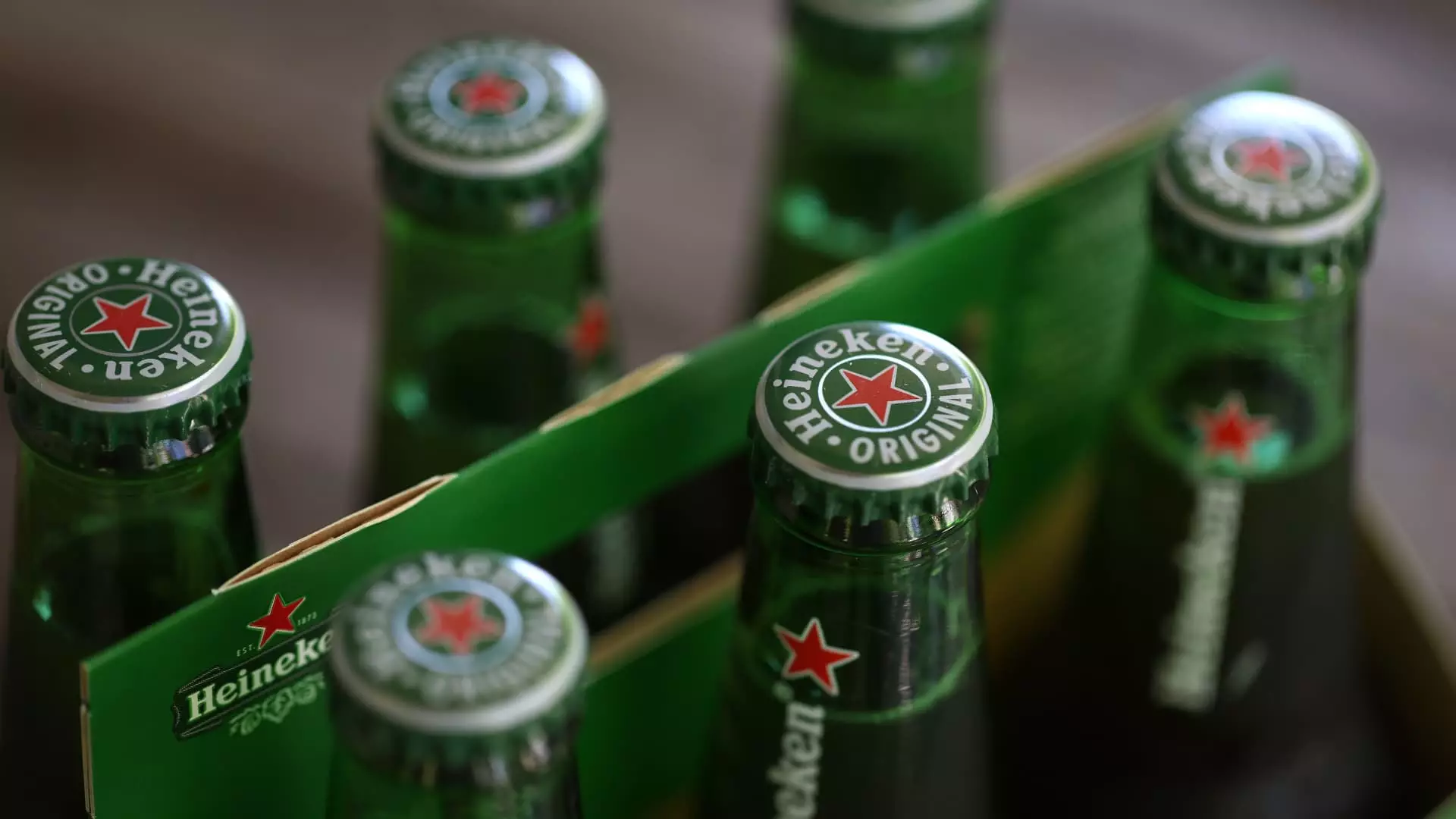Heineken shares experienced a significant drop, nearly 7%, as the brewing giant’s first-half profit growth fell short of analysts’ expectations. The company’s operating profit displayed organic growth of 12.5%, which was below the anticipated 13.2%. Furthermore, beer sales, which were projected to increase by 3.4%, only rose by 2.1%. This disappointing performance led to Heineken reporting a net loss of 95 million euro ($103 million), mainly due to a non-cash impairment of 874 million euro on its investment in Chinese brewing firm CR Beer.
Despite the setback, Heineken’s CEO, Dolf van den Brink, expressed satisfaction with the company’s solid performance in the first half. He highlighted the balanced and broad-based volume growth across their global footprint, including a 5% rise in premium products. In response to the poor results, Heineken revised its operating profit organic growth forecast for the year to a range between 4% to 8%, after previously indicating low to high single-digit growth. Analysts had eagerly awaited this update but were left disappointed as the results failed to meet their expectations.
Europe presented a significant challenge for Heineken, with only 0.2% profit growth compared to the expected 15.1%. This was primarily attributed to heightened promotional spending in a fiercely competitive market. However, Heineken was able to maintain its leadership position in low and no-alcohol beer sales, with Heineken 0.0 – a non-alcoholic beer – recording a 14% increase. The company identified a growing importance of this category, emphasizing the potential for substantial growth in low and no-alcohol products, surpassing the broader alcohol industry in the years to come.
Cost Pressures and Future Prospects
Heineken’s CEO, van den Brink, also addressed the reduction in input cost pressures on the company, particularly in Europe and the Americas. This reduction allowed for a moderation in pricing strategies, aimed at balancing revenue growth through both volume and pricing initiatives. The focus on rebalancing growth strategies reflects Heineken’s efforts to adapt to changing market dynamics and consumer preferences. Market research indicates a promising future for low and no-alcohol products, signaling significant opportunities for established brands and emerging players in the industry.
Through a critical analysis of Heineken’s recent performance, it becomes evident that the company faces challenges in certain regions and product categories. The fluctuations in stock prices and profit growth underscore the importance of strategic decision-making and agility in responding to market dynamics. Heineken’s focus on low and no-alcohol products highlights a growing trend in consumer preferences and presents new opportunities for innovation and growth in the beverage industry.

